A recent study at the Institute for Advanced Learning and Research (IALR) in Danville, Virginia, found that compostable HYPERroots Freeze Thawed (HRFT) grow plugs outperform conventional foam-based grow plugs in a greenhouse NFT hydroponic system. The trial, conducted at the Controlled Environment Agriculture Innovation Center (CEAIC), focused on basil (Ocimum basilicum), dill (Anethum graveolens), and spinach (Spinacia oleracea), assessing germination, growth, and yield metrics.
Customized plugs
The HYPERroots plugs are developed by U.S. company VelociGro, as a renewable alternative to traditional growing plugs, peat, rockwool, or coir. The multi-component gel formulation is designed to optimize plant growth while reducing waste and substrate-related system maintenance.
"This trial was about collecting comparative data under controlled conditions," said Tim Cuthbertson with Velocigro, who contributed to the development of the HYPERroots products. "HYPERroots has been formulated to allow flexibility in crop-specific recipes, and that's something we want to show via research."
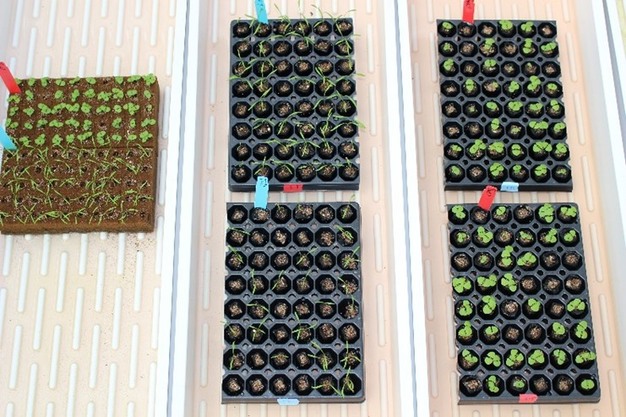 © VelocigroGerminating basil and dill in the propagation channels
© VelocigroGerminating basil and dill in the propagation channels
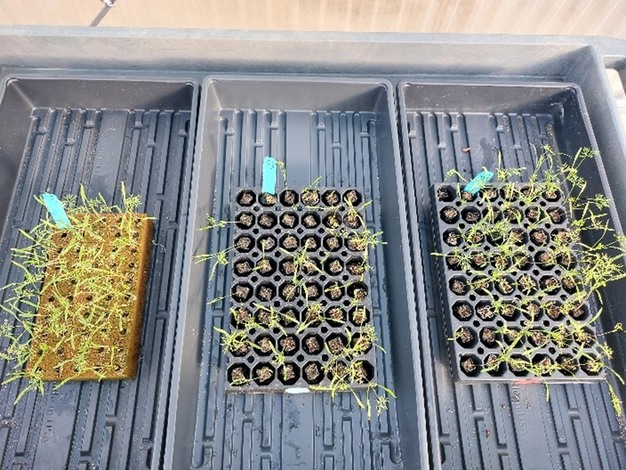 © Velocigro
© Velocigro
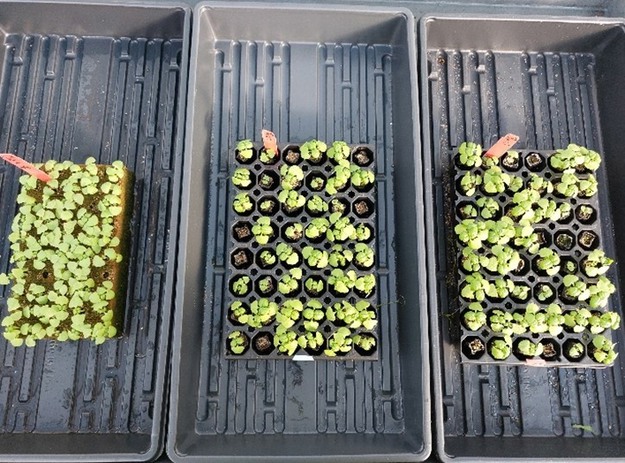 © Velocigro
© Velocigro
Fig. 3. Basil and dill seedlings at transplant, left to right substrates are regular plugs, HRFD and HRFT plugs
Trial and research
Seedlings of basil ('Genovese'), dill ('Teddy'), and spinach ('Seaside') were propagated in HRFT plugs and foam-based plugs. Spinach seeds were primed with 0.3% hydrogen peroxide to improve germination. HRFT plugs were hydrated overnight before seeding, while the traditional slabs were pre-soaked with water. All crops were transitioned from propagation trays to NFT hydroponic channels following germination and initial growth.
Environmental conditions were maintained with crop-specific EC and pH targets: basil at 1.4 mS/cm, dill at 1.5 mS/cm, and spinach at 1.6 mS/cm, all with a pH of 6.0. Greenhouse temperatures ranged from 65°F (night) to 77°F (day), with supplemental lighting when PAR dropped below 250 µmol/m²/s.
Germination outcomes
HRFT plugs supported high germination rates for basil (90%) and dill (92%), closely matching those of the traditional foam-based product (94% for both crops). In spinach, HRFT resulted in 79% germination, outperforming the other variant (43%).
 © VelocigroSpinach seedlings at transplant
© VelocigroSpinach seedlings at transplant
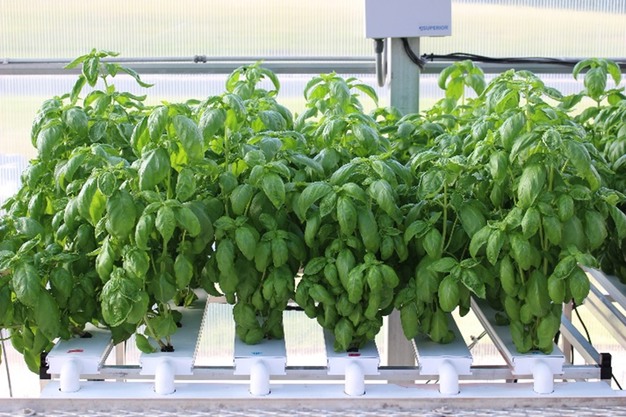 © Velocigro
© Velocigro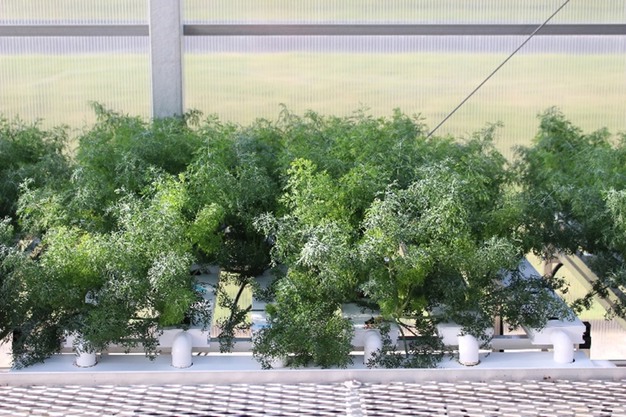 © Velocigro
© Velocigro
Basil and dill plants at harvest
Plant development and yield
At harvest, basil grown in HRFT showed a mean height of 50.4 cm and a fresh weight of 104.8 g. "These values were both statistically higher than those from the foam-based plugs, which produced plants with an average height of 45.0 cm and a fresh weight of 78.2 g. Root dry weight for HRFT basil was 2.15 g compared to 1.61 g", shows Tim. "For dill, both products showed similar height and root dry weight values. However, fresh weight was higher in HRFT (59.7 g) than the alternative product (52.7 g)."
Spinach grown in HRFT achieved a growth index of 21.6 and a fresh weight of 87.9 g, both statistically greater than in the traditional treatment (growth index 15.8; fresh weight 35.5 g).
"Spinach has been a useful indicator for substrate performance due to its more erratic germination," said Tim. "We've consistently seen HRFT support stronger early-stage spinach plant development and improved final weights in NFT systems compared to traditional foam-based plugs."
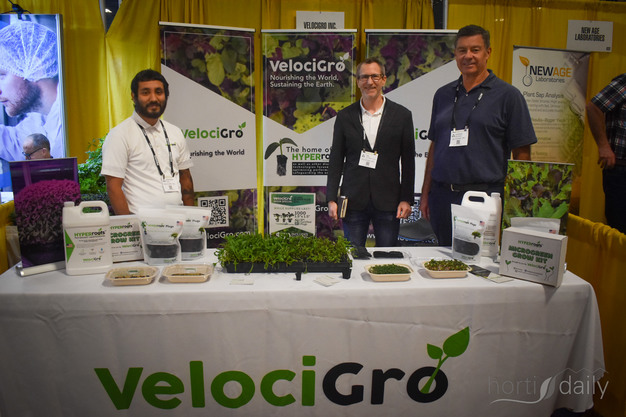 © Tinneke Hattingh | VerticalFarmDaily.comJonathan Romo, Tim Cuthbertson, Hunter Baldwin at Indoor Ag-Con 2025
© Tinneke Hattingh | VerticalFarmDaily.comJonathan Romo, Tim Cuthbertson, Hunter Baldwin at Indoor Ag-Con 2025
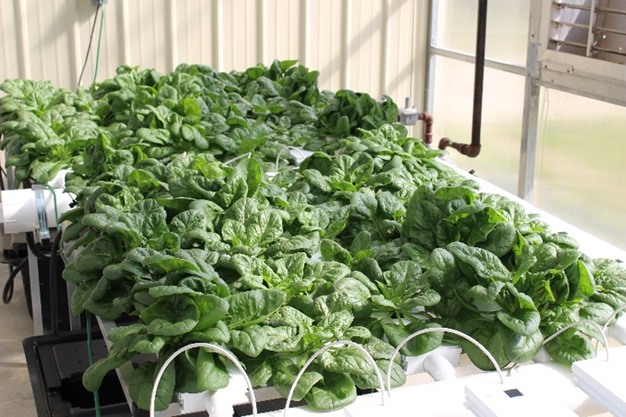 © Velocigro
© Velocigro
Spinach plants at harvest.
Additional observations
Researchers noted a higher presence of fungus gnats in the foam-based plugs throughout the trial. No quantified pest pressure data was recorded, but all treatments received two insecticide applications for control.
"Seedlings propagated in HRFT generally showed uniformity and robustness at transplant. The plugs required overnight hydration, and researchers adjusted shading and misting protocols to maintain adequate moisture levels during germination", Tim shows, adding: "What we're seeing is a more sustainable propagation substrate that integrates well with existing hydroponic workflows but offers better control over root zone hydration and air exchange. That has implications for consistency and downstream crop timing."
The results indicate that HRFT plugs are a promising sustainable alternative to traditional substrates, offering enhanced crop performance. Consistent with findings from related studies across various crops and systems, this data provides a valuable reference for growers aiming to optimize hydroponic production using environmentally friendly materials.
For more information: © Velocigro
© Velocigro
VelociGro
+1 (562) 579-1016
[email protected]
www.velocigro.com










